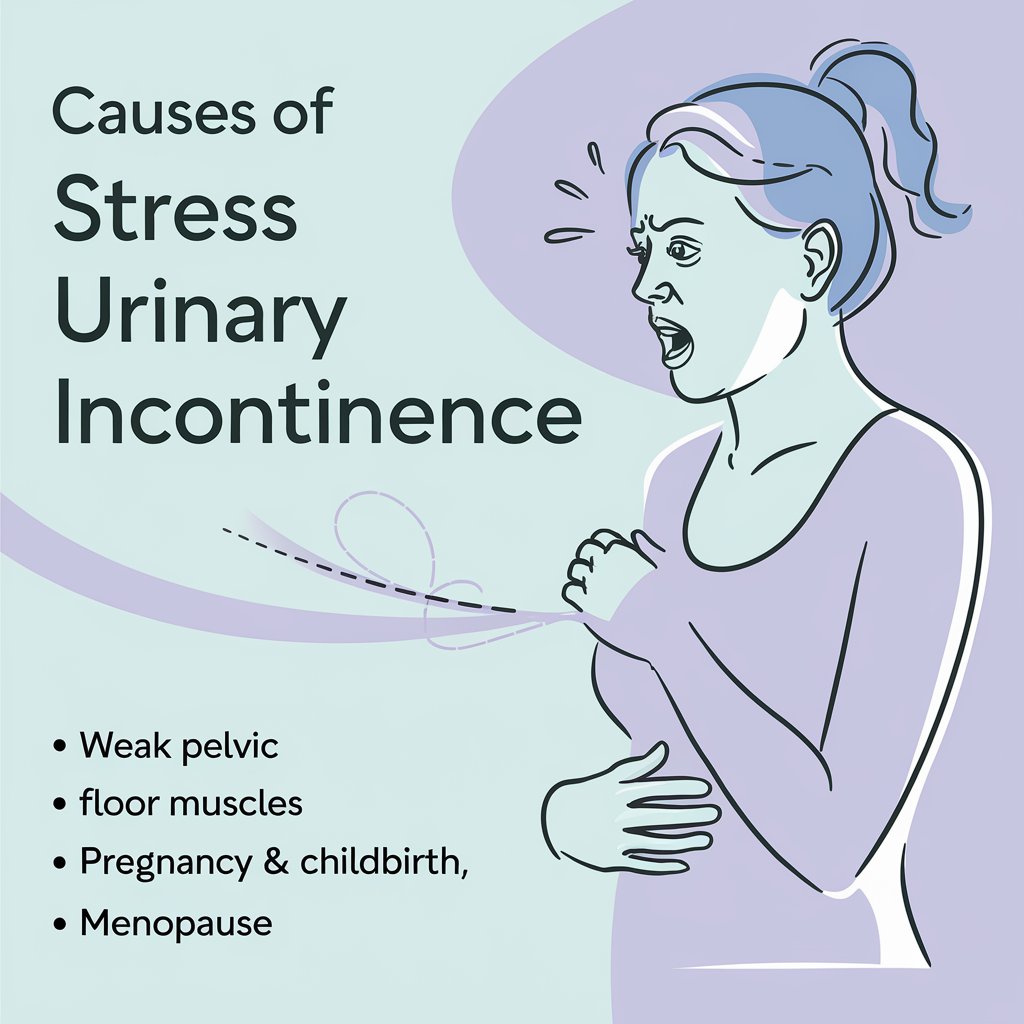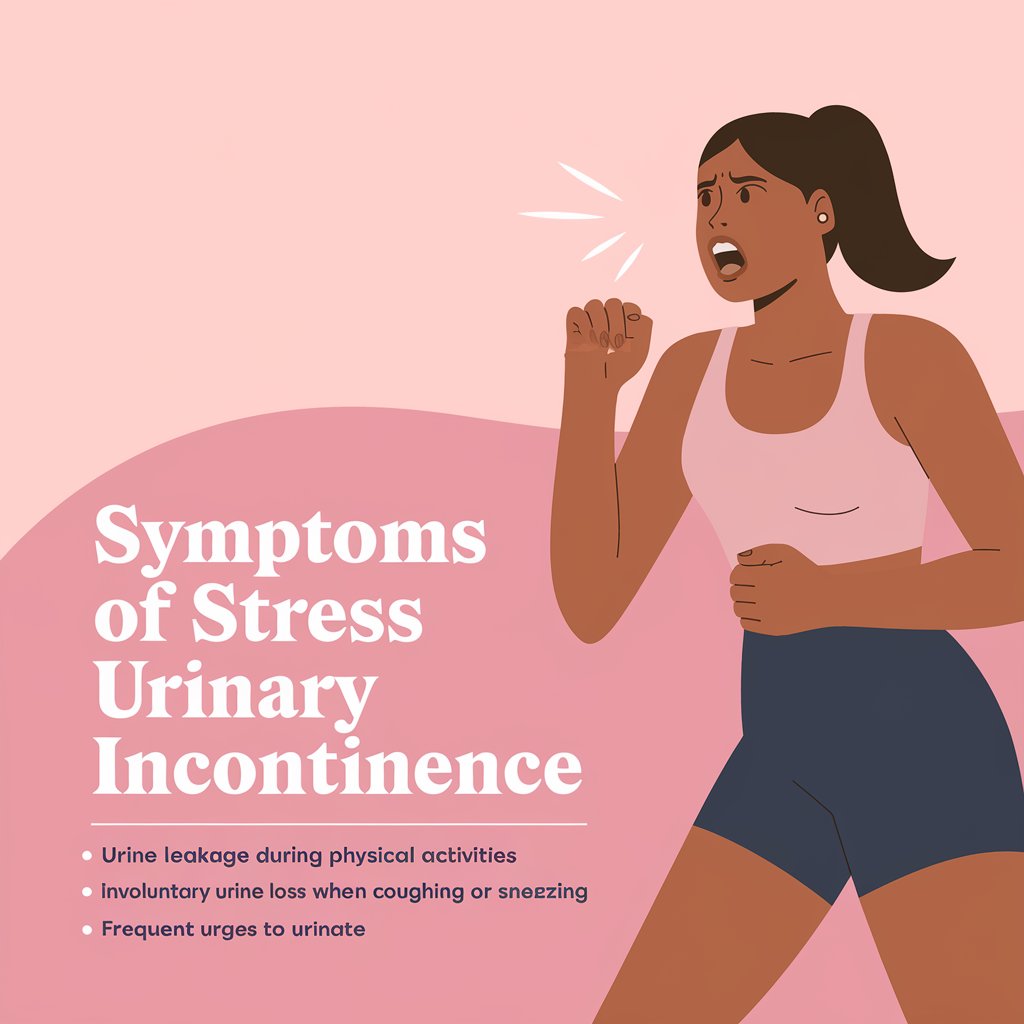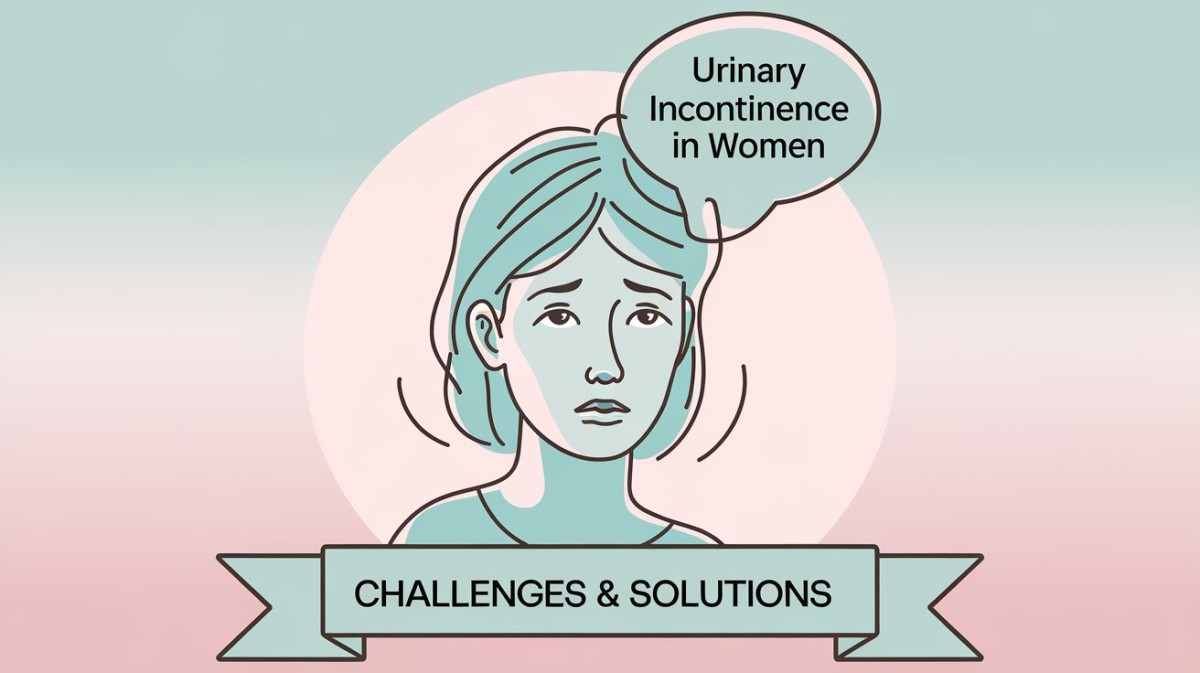How often do you have the urge to rush into the restroom?
Did you ever experience urinary leakage in the rush?
If it's a yes you might be having Urinary Incontinence! This is not anything to be panicked. This blog will help you find everything about urinary incontinence in women, during pregnancy, and menopause and what should be done to manage the same! Beginning with the basics,
What is Urinary Incontinence in Women?
Urinary incontinence is when you accidentally lose urine, i.e. involuntary leakage of urine when you do not intend to do so. Reports suggest that over 25 million American adults are diagnosed with urinary incontinence that too aged above 50. Urinary incontinence is a common condition that can affect people of all ages but is more prevalent in older adult Women.
Types of Urinary Incontinence
Stress Incontinence
The first sort of incontinence we will discuss is stress incontinence, which happens when urine leaks due to coughing, sneezing, laughing, and exercising. This happens due to pressure on the bladder.
Urge incontinence
Urge incontinence is something when you will be experiencing a sudden urge to urinate which will be followed by an involuntary leakage. The probability of this reaching you might be due to neurological conditions or bladder irritation.
Overflow Incontinence
The third type of incontinence is overflow incontinence where your bladder isn't empty during urination and it keeps dribbling afterwards. Men with prostate issues are more likely to experience this incontinence. Also in certain cases, it can be defined as urine production exceeding the capacity leading it to dribble.
Functional Incontinence
And delving into the fourth one we have functional incontinence which can be experienced due to physical or mental impairments (e.g., arthritis or dementia) preventing a person from reaching the toilet in time.
Furthermore, you might also experience a combination of two or more types of incontinence most likely to be stress and urge incontinence.
Causes of Stress Urinary Incontinence
 Weak pelvic floor muscles
Weak pelvic floor muscles
Pregnancy and childbirth
Menopause (reduced estrogen levels)
Prostate issues (in men)
Neurological disorders (e.g., Parkinson’s, stroke, multiple sclerosis)
Urinary tract infections (UTIs)
Certain medications (e.g., diuretics)
Symptoms
 Sudden urge to urinate, sometimes leading to leakage.
Sudden urge to urinate, sometimes leading to leakage.
Urine leakage during movement or exercise
Leakage that interferes with your daily life activities.
Involuntary urine loss when coughing, sneezing, or laughing.
Persistent leakage after surgery.
Constant wetness without noticing urine leakage.
Feeling that the bladder isn’t fully emptied
Urinary Incontinence in Different Scenarios
There are cases where urinary incontinence can be due to underlying health concerns. So here are a few common changes associated with urinary incontinence.
Is Urinary Incontinence Common in Pregnancy?
So, the likelihood of getting diagnosed with urinary incontinence can be a bit higher in pregnancy due to hormonal changes and the weight of the fetus can lead to stress incontinence.
Urinary Incontinence After Delivery
After giving birth via vaginal delivery it can weaken bladder control muscles and damage nerves, leading to pelvic organ prolapse. This occurs when the bladder, uterus, rectum, or small intestine shift from their normal position and press into the vagina, thereby causing incontinence.
Urinary Incontinence and Menopause
When women reach menopause, the body produces less estrogen, a hormone that maintains the health of the bladder and urethral lining. As these tissues weaken, the risk of incontinence increases.
Urinary Incontinence in Elderly Women
As mentioned above urinary incontinence is quite a frequent concern in elderly women this is because with age, the bladder and urethral muscles weaken, reducing bladder capacity and increasing the risk of involuntary urine leakage.
Treatment and Management Options
 Relying on your age, health, medical history, and the type of incontinence you are experiencing with treatment procedure will be allocated by a urologist or a uro-gynecologist. So the procedure encompasses:
Relying on your age, health, medical history, and the type of incontinence you are experiencing with treatment procedure will be allocated by a urologist or a uro-gynecologist. So the procedure encompasses:
1)Behavioural Therapy:
Bladder Training:
This bladder training teaches individuals with incontinence to resist the urge to urinate and gradually lengthen the time between bathroom visits.
Toileting Assistance:
Includes routine/scheduled toileting, habit training, and prompted voiding to regularly empty the bladder and reduce leakage.
Diet Modifications:
Diet is one of the crucial factors that involves eliminating bladder irritants such as caffeine, alcohol, and citrus fruits to help manage symptoms.
Pelvic Muscle Rehabilitation (To Improve Pelvic Muscle Tone & Prevent Leakage):
Regular, daily pelvic muscle exercises are known to strengthen muscles and prevent urinary incontinence.
Vaginal Weight Training:
In the vaginal weight training procedure, small weights are inserted into the vagina, and the muscles are tightened to improve strength.
Pelvic Floor Electrical Stimulation:
Mild electrical pulses are applied to stimulate muscle contractions and improve pelvic floor strength.
2)Medications:
Anticholinergic Medications:
Help reduce bladder muscle spasms and urge incontinence.
Vaginal Estrogen:
Restores hormone balance in the vaginal area, improving muscle tone and reducing incontinence symptoms.
Pessary:
A small rubber device is inserted into the vagina to provide support and prevent leakage.
Office Procedures:
Botox Injections into the Bladder:
Used to relax the bladder muscles and reduce overactive bladder symptoms.
Urethral Bulking Agents:
Injected into the urethra to help it close more effectively and prevent leakage.
Peripheral Nerve Stimulation:
Electrical stimulation is used to regulate bladder function by targeting nerves controlling the bladder.
3)Surgical Options:
Slings:
Synthetic mesh or natural tissue is used to support the bladder and prevent leakage.
Bladder Suspension:
Surgical procedure to reposition the bladder and secure it to the pelvic bones to reduce leakage.
Peripheral Nerve Stimulation (Surgical):
A more permanent solution to regulate bladder function through implanted devices.
Conclusion
This concise and clear knowledge of the problem will allow you to address the concern with an appropriate way of dealing with the solutions. As discussed each individual might have different sorts of a condition so do visit with a health care provider to get a tailored treatment procedure.
